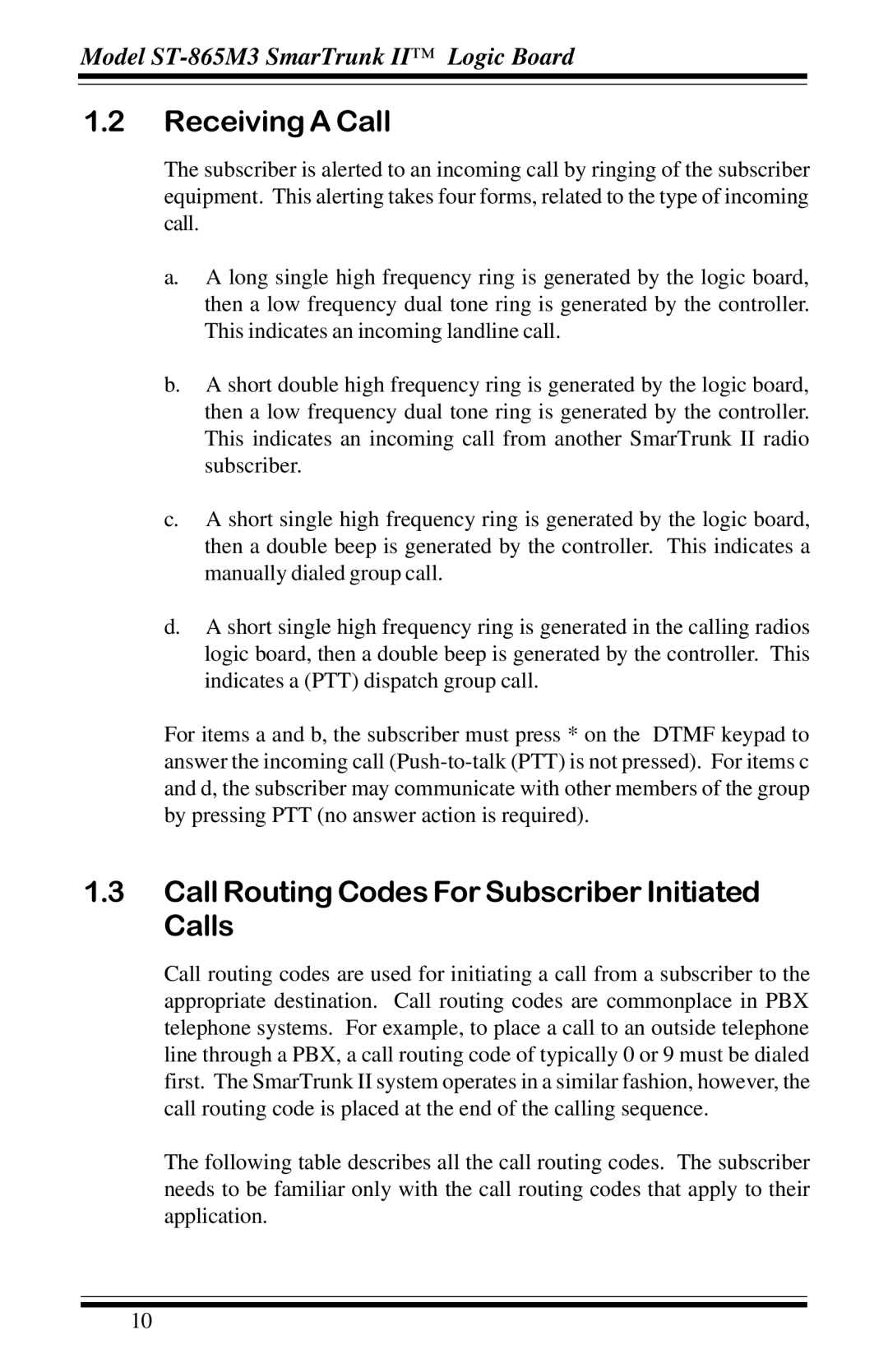
Model
1.2Receiving A Call
The subscriber is alerted to an incoming call by ringing of the subscriber equipment. This alerting takes four forms, related to the type of incoming call.
a.A long single high frequency ring is generated by the logic board, then a low frequency dual tone ring is generated by the controller. This indicates an incoming landline call.
b.A short double high frequency ring is generated by the logic board, then a low frequency dual tone ring is generated by the controller. This indicates an incoming call from another SmarTrunk II radio subscriber.
c.A short single high frequency ring is generated by the logic board, then a double beep is generated by the controller. This indicates a manually dialed group call.
d.A short single high frequency ring is generated in the calling radios logic board, then a double beep is generated by the controller. This indicates a (PTT) dispatch group call.
For items a and b, the subscriber must press * on the DTMF keypad to answer the incoming call
1.3Call Routing Codes For Subscriber Initiated Calls
Call routing codes are used for initiating a call from a subscriber to the appropriate destination. Call routing codes are commonplace in PBX telephone systems. For example, to place a call to an outside telephone line through a PBX, a call routing code of typically 0 or 9 must be dialed first. The SmarTrunk II system operates in a similar fashion, however, the call routing code is placed at the end of the calling sequence.
The following table describes all the call routing codes. The subscriber needs to be familiar only with the call routing codes that apply to their application.
10
